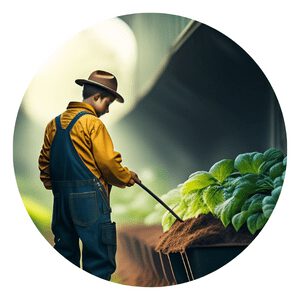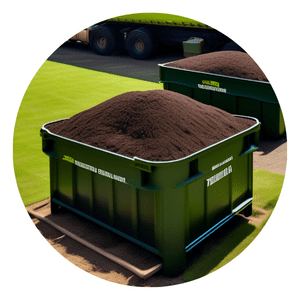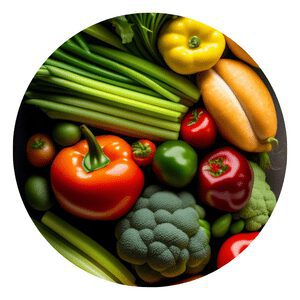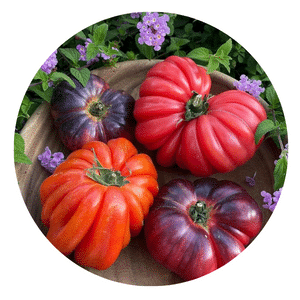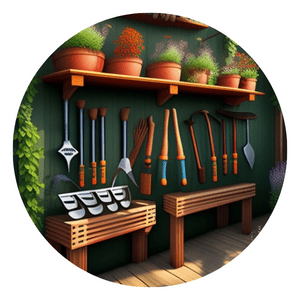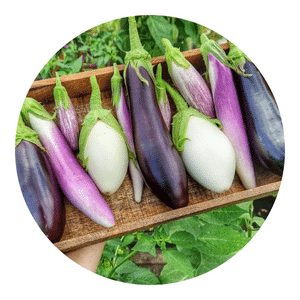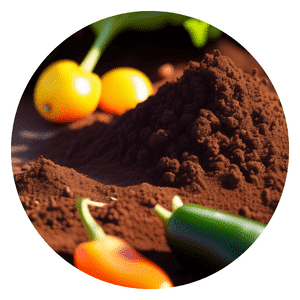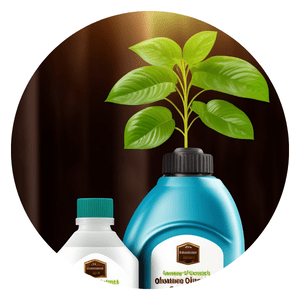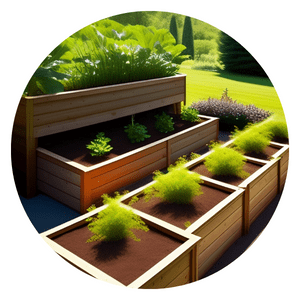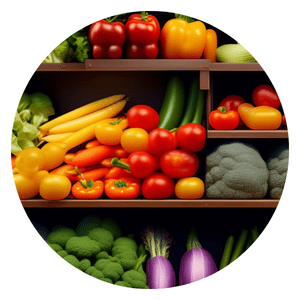The Ultimate Guide to Organic Gardening: From Garden to Table
Organic gardening is becoming increasingly popular as people become more aware of the environmental and health benefits it provides.
It’s an enjoyable and rewarding activity that can help you grow fresh, healthy produce right in your own backyard or balcony.
If you’re new to gardening, the Ultimate Guide to Organic Gardening: From Garden to Table will provide you with all the essential knowledge and tools you need for successful organic gardening.
Garden to Table Menu
Step 1: Choose a suitable location
As an organic gardener, one of the most important steps in starting a successful vegetable garden is selecting the right location.
A suitable location is one that receives at least six hours of sunlight daily, and that provides the ideal growing conditions for your plants.
The amount of sunlight your garden receives is crucial, as most vegetables require plenty of sunlight to grow and thrive.
Without adequate sunlight, your plants may be stunted or produce less fruit.
Therefore, it’s important to choose a location that receives the right amount of sunlight for the specific vegetables you want to grow.
When selecting a location for your garden, consider the following factors:
Sun exposure: Look for a spot that receives at least 6 hours of direct sunlight each day.
Avoid locations with shade from trees, buildings, or other obstacles that can block sunlight.
Soil quality: Your garden soil should be well-draining and nutrient-rich.
Consider testing your soil for pH level and adding organic matter, such as compost or aged manure, to improve its structure and fertility.
Water source: Make sure your garden is near a water source, such as a hose or irrigation system, for easy watering.
Accessibility: Choose a location that is easy to access and maintain, especially if you plan to spend a lot of time working in your garden.
Some examples of organic gardening methods that can help maximize the sunlight in your garden include:
Using raised garden beds or containers to position your plants where they can get the most sun exposure.
Using reflective mulches, such as aluminum foil or white plastic, to reflect sunlight onto your plants and increase their growth.
Planting sun-loving vegetables, such as tomatoes, peppers, and squash, in the sunniest spots of your garden.
By choosing a suitable location for your garden and ensuring that your plants receive plenty of sunlight, you can set the foundation for a bountiful and successful organic garden.
Step 2: Test your soil and amend it with organic materials
Step 2 in becoming an organic gardener is to test your soil and amend it with organic materials to improve its fertility and structure.
This step is crucial because healthy soil is the foundation of a thriving garden.
Soil that is nutrient-rich and well-structured provides a healthy environment for plants to grow and produce an abundant harvest.
Before planting your garden, it’s important to test your soil to determine its pH level and nutrient content. You can do this by purchasing a soil test kit or by sending a soil sample to a soil testing laboratory.
The results of the test will help you determine which nutrients your soil is lacking and which amendments are needed to improve its structure and fertility.
One of the best ways to amend your soil is by adding organic materials, such as compost, manure, or worm castings.
These organic materials are rich in nutrients and beneficial microorganisms that improve soil health and promote plant growth.
Here are some examples of organic materials you can use to amend your soil:
Compost:
Compost is a mixture of decomposed organic materials, such as leaves, grass clippings, and kitchen scraps.
It is rich in nutrients and beneficial microorganisms that improve soil structure and fertility. You can make your own compost at home or purchase it from a garden center.
Manure:
Animal manure, such as cow, horse, or chicken manure, is a rich source of nitrogen, phosphorus, and potassium. It helps improve soil fertility and structure and promotes healthy plant growth.
Be sure to use aged or composted manure to avoid burning your plants.
Worm castings:
Worm castings are the excrement of earthworms and are a rich source of nutrients and beneficial microorganisms. They help improve soil structure and fertility and promote healthy plant growth.
Other organic materials that can be used to amend your soil include bone meal, blood meal, fish emulsion, and seaweed extract.
By testing your soil and amending it with organic materials, you can ensure that your plants have the nutrients they need to thrive.
This will result in a healthier garden and a more abundant harvest.
Step 3: Choose the vegetables
Step 3 in becoming an organic gardener is to choose the vegetables you want to grow based on your preferences, climate, and garden size.
This step is important because it ensures that you’re planting the right crops for your specific growing conditions, which will help maximize your harvest and reduce the risk of plant disease and pest problems.
When choosing which vegetables to grow, consider the following factors:
Your preferences: Consider which vegetables you enjoy eating and which ones are most commonly used in your household’s meals.
Climate: Choose vegetables that are well-suited to your local climate.
Some vegetables, such as tomatoes and peppers, require a warm climate, while others, such as broccoli and lettuce, prefer cooler temperatures.
Garden size: Consider the size of your garden and choose vegetables that are appropriate for the space you have available.
Once you have selected the vegetables you want to grow, it’s important to choose high-quality organic seeds or seedlings that are adapted to your growing conditions.
Here are some examples of organic gardening methods for selecting the right seeds or seedlings:
Seed selection:
Choose organic seeds that are specifically adapted to your growing conditions.
Look for seeds that are labeled “heirloom” or “open-pollinated” to ensure that they are non-GMO and have been grown without the use of synthetic chemicals.
Seedling selection:
If you prefer to use seedlings, choose organic seedlings that are healthy and strong.
Avoid seedlings that are wilted, yellowing, or have signs of disease.
Seed starting:
Consider starting your own seeds indoors to give them a head start and ensure that they are adapted to your specific growing conditions.
Use organic potting soil and avoid using synthetic fertilizers or pesticides.
By choosing the right vegetables and selecting high-quality organic seeds or seedlings, you can set the foundation for a successful and bountiful organic garden.
Spiders, frogs, birds, hedgehogs are all harmful insect predators and system scales, and it is important to host some of them in the garden and find a place for them. Therefore in a sustainable field it is important to establish a small pool of water, grow flowers rich in nectar and pollen (friendly plants), leave some weeds between the vegetable crops (Gazi) and build trenches and burrows for them.
Chappy The Gardener
Step 4: Plan your garden layout
Step 4 in becoming an organic gardener is to plan your garden layout, taking into account the spacing and growth habits of each vegetable.
This step is important because it ensures that each plant has enough space to grow and thrive, and that the garden is organized in a way that is easy to maintain and harvest.
When planning your garden layout, consider the following factors:
Spacing: Different vegetables require different amounts of space to grow.
Make sure to plant each vegetable with enough room to allow for air circulation and to avoid overcrowding.
Overcrowded plants are more prone to disease and pest problems.
Growth habits: Some vegetables, such as tomatoes and cucumbers, require support structures, while others, such as lettuce and spinach, grow low to the ground.
Consider the growth habits of each vegetable and plan your garden accordingly.
Companion planting: Companion planting is the practice of planting different vegetables together that have beneficial effects on each other.
For example, planting beans with corn can help fix nitrogen in the soil, while planting marigolds can deter pests.
Consider incorporating companion planting into your garden plan to improve soil health and deter pests.
Here are some examples of companion planting and how it can benefit your garden:
Beans fix nitrogen in the soil, which benefits corn.
In turn, corn provides support for the climbing beans.
Basil repels pests that are attracted to tomatoes, while tomatoes provide some shade for basil.
Marigolds and vegetables:
Marigolds repel nematodes and other pests that attack vegetables.
Onions repel carrot flies, while carrots attract beneficial insects that prey on onion pests.
By planning your garden layout and incorporating companion planting, you can create a healthy and thriving organic garden that is more resistant to pests and diseases.
Step 5: Plant your vegetables
Step 5 in becoming an organic gardener is to plant your vegetables in the ground or in raised beds, following the recommended spacing and depth for each crop.
This step is important because it ensures that your plants have enough space to grow and receive the proper amount of water and nutrients.
When planting your vegetables, consider the following factors:
Spacing:
Make sure to follow the recommended spacing for each crop.
Overcrowding plants can lead to disease and pest problems.
Depth:
Plant each vegetable at the appropriate depth.
Planting too shallow or too deep can affect growth and yield.
Watering:
Water your plants regularly and deeply to ensure that they receive enough moisture.
Avoid watering too frequently, as this can lead to shallow root growth.
Fertilizing:
Use organic fertilizers, such as fish emulsion, seaweed extract, or bone meal, to provide your plants with the nutrients they need to grow and produce.
Avoid using synthetic fertilizers, as they can harm beneficial soil organisms and contribute to water pollution.
Here are some examples of organic gardening methods for planting and caring for your vegetables:
In-ground planting:
Plant your vegetables directly in the ground, following the recommended spacing and depth for each crop.
Use a hoe or rake to create rows, and then plant your seeds or seedlings.
Raised beds:
Create raised beds using untreated lumber or other materials, and fill them with a mixture of compost and soil.
Follow the recommended spacing and depth for each crop, and water and fertilize regularly.
Watering:
Use a drip irrigation system or soaker hoses to water your plants deeply and efficiently.
Avoid watering the foliage, as this can lead to disease.
Fertilizing:
Use organic fertilizers, such as fish emulsion or seaweed extract, to provide your plants with the nutrients they need.
Apply fertilizer according to the recommended rate, and avoid over-fertilizing.
By following these organic gardening methods, you can ensure that your vegetables receive the proper care and nutrients they need to grow and produce a bountiful harvest.
Step 6: Weed your garden
Step 6 in becoming an organic gardener is to weed your garden regularly and monitor your plants for signs of pests or disease.
Weeds compete with your vegetables for nutrients and space, so it’s important to remove them regularly to ensure that your plants thrive.
Additionally, pests and diseases can quickly spread in a garden and can have a devastating impact on your crop.
Here are some organic gardening methods for controlling weeds, pests, and diseases:
- Weeding: Pull weeds by hand or use a hoe to remove them. Avoid using chemical weed killers, as they can harm beneficial soil organisms.
- Pest control: Monitor your plants regularly for signs of pests, such as chewed leaves or holes. Use organic methods, such as neem oil, garlic spray, or diatomaceous earth, to control pests. These methods are effective and safe for beneficial insects and pollinators.
- Disease control: Monitor your plants for signs of disease, such as yellowing leaves or spots. Remove any infected plants and dispose of them away from your garden. Use organic methods, such as copper fungicides or compost tea, to prevent the spread of disease.
- Companion planting: Use companion planting to deter pests and improve soil health. For example, planting marigolds or garlic around your tomatoes can help repel pests and prevent disease.
By regularly weeding your garden and monitoring your plants for pests and disease, you can prevent problems before they occur and ensure a healthy and productive garden.
Using organic methods for weed and pest control also ensures that your garden is free from harmful chemicals and safe for your family to enjoy.
Step 7: Harvest your vegetables at the right time
Step 7 in becoming an organic gardener is to harvest your vegetables at the right time and store them properly.
Harvesting at the right time ensures that your vegetables are at their peak of flavor and nutritional value.
Here are some tips for harvesting and storing your vegetables:
Harvest at the right time:
Each vegetable has its own optimal harvest time.
For example, tomatoes should be picked when they are fully ripe and red, while cucumbers should be picked when they are firm and green.
Harvesting too early or too late can affect the flavor and texture of your vegetables.
Handle with care:
Be gentle when harvesting your vegetables to avoid damaging the plants.
Use a sharp knife or scissors to cut the vegetables from the plant.
Store properly:
Store your vegetables in a cool, dry place to maintain their freshness and nutritional value. Some vegetables, like tomatoes and peppers, can be stored at room temperature, while others, like leafy greens, should be stored in the refrigerator.
Use them up:
Eat your vegetables as soon as possible after harvesting for maximum freshness and flavor. If you have excess vegetables, consider preserving them by canning, freezing, or dehydrating.
By harvesting your vegetables at the right time and storing them properly, you can enjoy the fruits of your labor for longer and ensure that your family is getting the most nutritional value from your homegrown produce.
Step 8: Cook and enjoy your vegetables
Step 8 in becoming an organic gardener is to cook and enjoy your vegetables in a variety of healthy and delicious ways.
Here are some tips for cooking and sharing your homegrown vegetables:
Experiment with recipes: Try new recipes that feature your homegrown vegetables as the star ingredient.
There are endless possibilities for cooking with vegetables, from stir-fries and salads to soups and stews.
Use healthy cooking methods: Choose healthy cooking methods, such as steaming, grilling, or roasting, to preserve the nutritional value of your vegetables.
Avoid deep-frying or overcooking your vegetables, which can reduce their nutritional value and flavor.
Share your surplus: If you have more vegetables than you can use, consider sharing them with friends, family, or neighbors.
You can also donate them to a local food bank or community kitchen.
Preserve your harvest: If you have a surplus of vegetables, consider preserving them for later use.
You can freeze, can, or dehydrate your vegetables to enjoy them throughout the year.
Cooking and sharing your homegrown vegetables is a rewarding experience that allows you to enjoy the fruits of your labor and share your bounty with others.
By using healthy cooking methods and sharing your surplus, you can promote healthy eating habits and build community connections through your love of gardening.
Step 9: Maintain your garden
Step 9 in becoming an organic gardener is to maintain your garden throughout the growing season by pruning, mulching, and rotating your crops.
Here are some tips for maintaining your organic garden:
Prune your plants:
Prune your plants regularly to encourage healthy growth and prevent disease.
Remove any dead, damaged, or diseased branches, as well as any crossing or rubbing branches.
Mulch your soil:
Mulch your soil with organic materials, such as straw, leaves, or grass clippings, to retain moisture and suppress weeds. This will also help to improve soil health by adding organic matter to the soil as the mulch decomposes.
Rotate your crops:
Rotate your crops each year to prevent soil-borne diseases and pests from building up in the soil.
Plan your crop rotation carefully, taking into account the nutrient needs and growth habits of each crop.
Keep learning and experimenting:
Continue to learn and experiment with new organic gardening techniques to improve your skills and yields.
Attend workshops, read gardening books and blogs, and connect with other organic gardeners in your community.
By maintaining your garden throughout the growing season and continually learning and experimenting with new organic gardening techniques, you can improve the health and productivity of your garden.
Pruning, mulching, and crop rotation are essential practices that will help you to grow healthy, thriving plants.
Additionally, by staying engaged with the wider organic gardening community, you can stay up-to-date with the latest trends and innovations in organic gardening.
Step 10: Celebrate your success as an organic gardener
Step 10 in becoming an organic gardener is to celebrate your success as a gardener and the joy of growing your own food from garden to table.
Here are some ways to celebrate your success as an organic gardener:
Host a garden party:
Invite your friends and family over for a garden party and showcase your organic produce.
You can cook up some delicious dishes using your fresh vegetables, and share your gardening tips and experiences with your guests.
Preserve your harvest:
Preserve your harvest by canning, freezing, or dehydrating your fruits and vegetables. This will allow you to enjoy your organic produce all year round and share it with others.
Donate your surplus:
Donate your surplus produce to local food banks, soup kitchens, or shelters. This is a great way to give back to your community and help those in need.
Keep a garden journal:
Keep a garden journal to document your successes and challenges throughout the growing season. This will help you to track your progress and learn from your experiences.
Reflect on your journey:
Take some time to reflect on your journey as an organic gardener and the lessons you have learned along the way.
Celebrate the hard work, patience, and dedication that you have put into your garden.
Growing your own food from garden to table is a rewarding experience that brings joy, satisfaction, and health benefits.
Celebrating your success as an organic gardener can inspire others to try their hand at growing their own food and contribute to a more sustainable food system.
By sharing your produce, preserving your harvest, and reflecting on your journey, you can savor the fruits of your labor and inspire others to join the organic gardening movement.
In conclusion, organic gardening is an incredibly rewarding and sustainable practice that can benefit both the environment and your own health.
Here, you have learned all the basics to get started: from choosing the right soil, to planting your crops, to harvesting them for your table.
With a little patience and knowledge, you can be well on your way to enjoying delicious homegrown produce in no time.
Click To Grow
Helps Us Grow – Share If You Like


